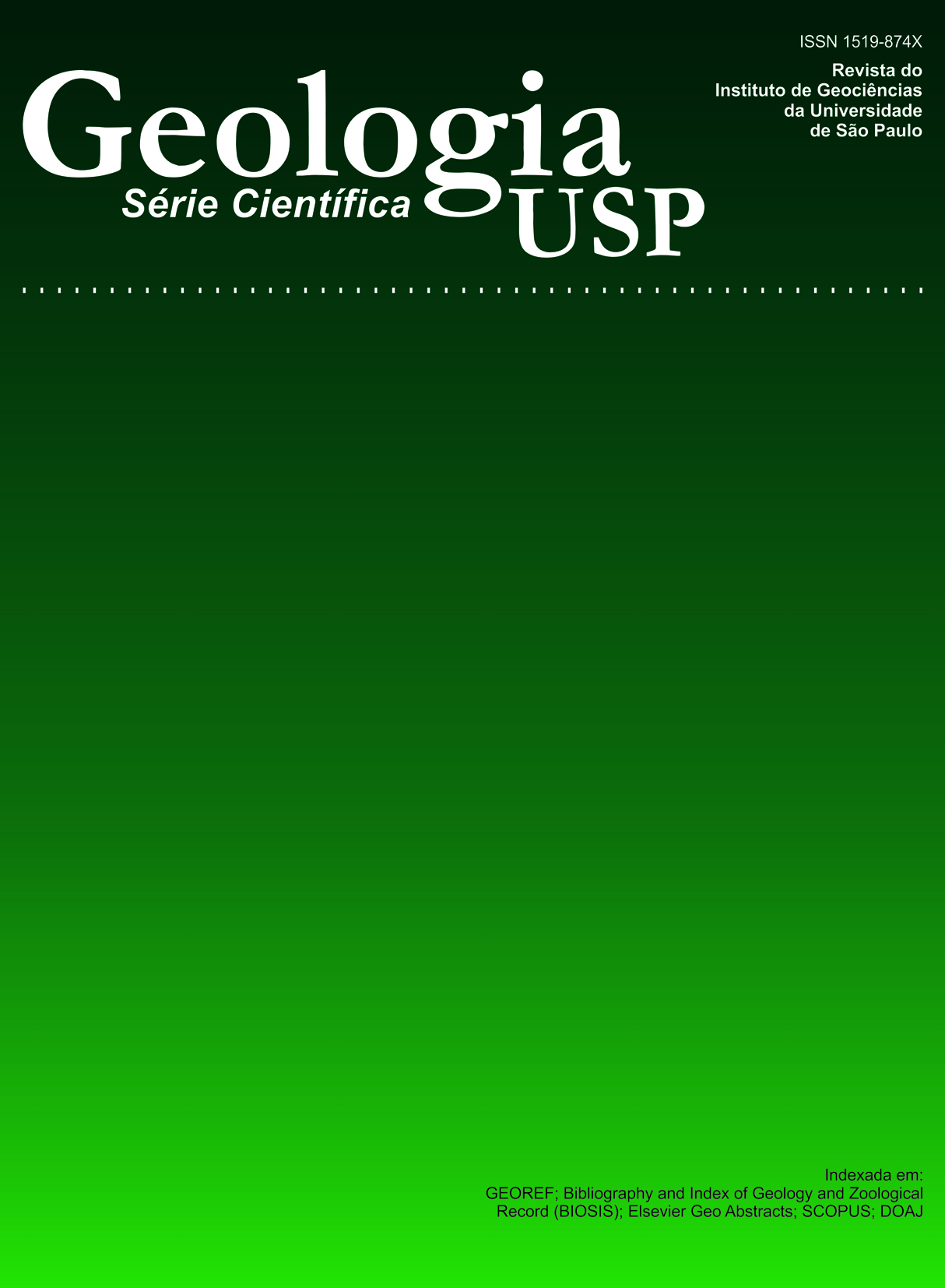Permian bivalves of the Taciba Formation, Itararé Group, Paraná Basin, and their biostratigraphic significance
DOI:
https://doi.org/10.5327/Z1519-874X2012000100006Keywords:
Bivalvia, Megadesmidae, Permian, Paraná Basin, Taciba Formation, Eurydesma faunaAbstract
A small and poorly diversified bivalve fauna from Taciba Formation, Itararé Group, Paraná Basin (State of Santa Catarina, Mafra Municipality), is described in this paper for the first time, based on new findings. The fauna is recorded in a 30 cm thick interval of fine sandstone locally at the top of Taciba Formation, in the Butiá quarry. The studied fossil-bearing sandstone bed is a marine intercalation recording a brief eustatic rise in sea-level, probably following glacier retreat and climate amelioration at the end of a broad glacial scenario. The fauna is mainly dominated by productid brachiopods, which are not described here, and rare mollusk shells (bivalves and gastropods). Two bivalve species were identified: Myonia argentinensis (Harrington, 1955), and Aviculopecten multiscalptus (Thomas, 1928). The presence of Myonia argentinensis is noteworthy since this species is also present in the Baitaca assemblage found in marine siltstones (Baitaca assemblage) of the Rio do Sul Formation, cropping out at the Teixeira Soares region, Paraná State. This species is also recorded in the bivalve fauna from the Bonete Formation, Pillahinco Group, Sauce Grande Basin, Buenos Aires Province, in Argentina. Hence, the marine bivalves of the Taciba Formation are associated with the transgressive event that characterizes the Eurydesma fauna, indicating a Late Asselian-Sakmarian age for the bivalve fauna. Presence of the Myonia argentinensis megadesmid species reinforces the Gondwanic nature of the studied fauna.Downloads
Download data is not yet available.
Downloads
Published
2012-04-01
Issue
Section
Articles
License
Authors who publish in this journal shall comply with the following terms:
- Authors keep their copyright and grant to Geologia USP: Série Científica the right of first publication, with the paper under the Creative Commons BY-NC-SA license (summary of the license: https://creativecommons.org/licenses/by-nc-sa/4.0 | full text of the license: https://creativecommons.org/licenses/by-nc-sa/4.0/legalcode) that allows the non-commercial sharing of the paper and granting the proper copyrights of the first publication in this journal.
- Authors are authorized to take additional contracts separately, for non-exclusive distribution of the version of the paper published in this journal (publish in institutional repository or as a book chapter), granting the proper copyrights of first publication in this journal.
- Authors are allowed and encouraged to publish and distribute their paper online (in institutional repositories or their personal page) at any point before or during the editorial process, since this can generate productive changes as well as increase the impact and citation of the published paper (See The effect of Open Access and downloads on citation impact).
How to Cite
Simões, M. G., Neves, J. P., Anelli, L. E., & Weinschütz, L. C. (2012). Permian bivalves of the Taciba Formation, Itararé Group, Paraná Basin, and their biostratigraphic significance . Geologia USP. Série Científica, 12(1), 71-82. https://doi.org/10.5327/Z1519-874X2012000100006





